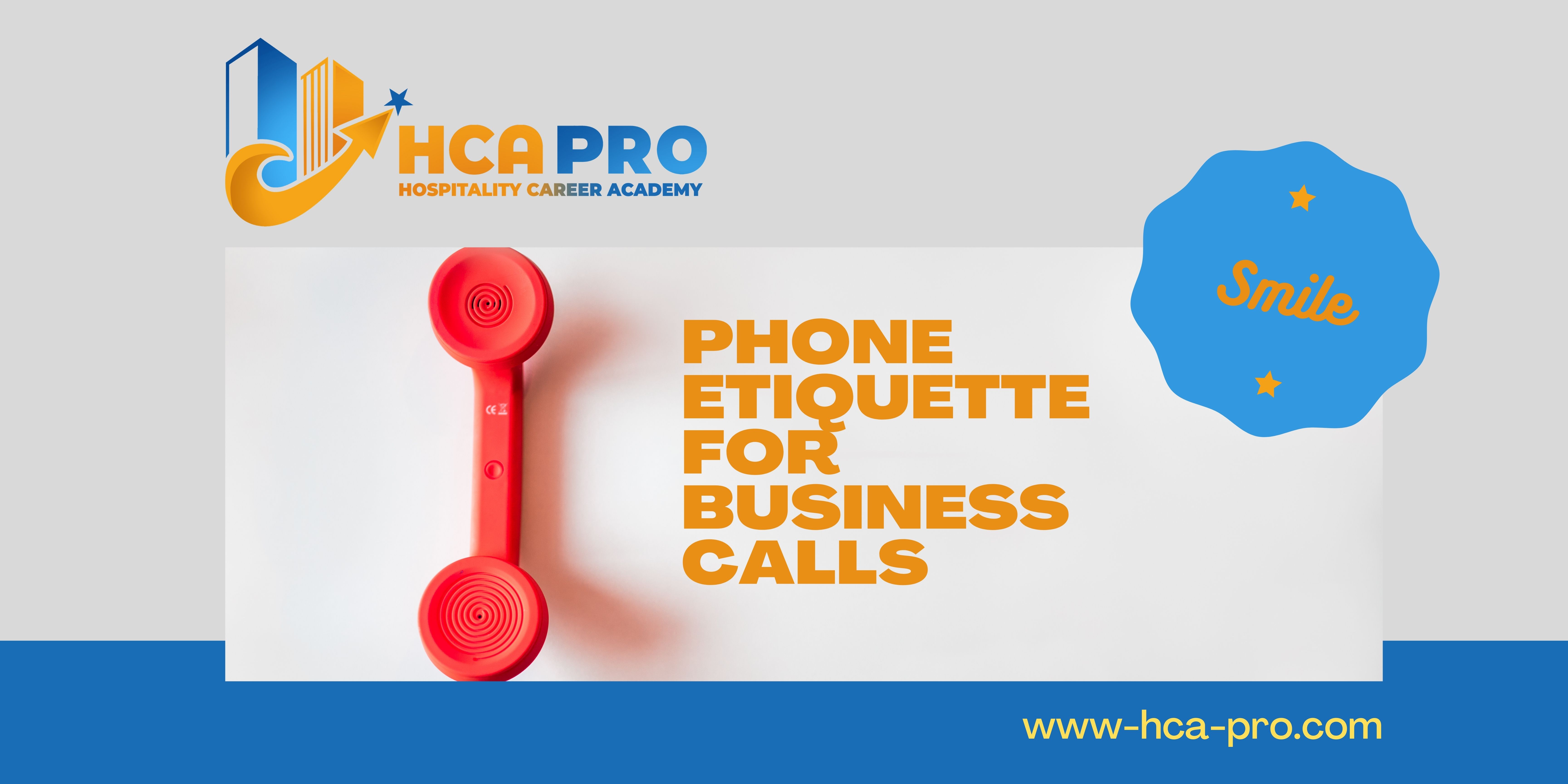
How to answer phone calls
Don’t let the 3rd ring hit your head:
Always try to answer your own telephone whenever possible
Always practice answering your telephone within 2-3 rings
Answer phone calls Smile:
Smile when you talk to people. Although they might not be able to see you, a smile can be heard in your voice and the caller will be much more relaxed in their conversation with you. People love talking to happy people.
Caller may not be able to see what you’re doing, if they don’t have your full attention it will be heard in your tone and responses.
Greeting with happiness “From The Heaven”:
Greeting of the day (Good Morning/Afternoon/Evening)
Who they are talking to:
For internal calls: Always answer the phone with your name at the end of your greeting. “Thank you for calling Reception, Yasser Speaking”
For external calls: Pronounce your property clearly. “Thank you for calling Al Baron Resort, Front Office”
You are here to assist:
Offer assistance (how I can assist you? / may I assist you?)
The Name:
You don’t know the guest name? Not an issue simply you can ask (May I have your name?)
Start Speak clearly don’t Shout or whisper:
Speak clearly. You have something to say and the person at the other end wants to hear it. Being overly loud or overly quiet can make a phone conversation very awkward and might mean you don’t get all of the information to the person on the other end.
Use proper language:
Avoid coming off as abrupt and unprofessional by all means.
Don’t Use:
-
“Hold on.”
-
“Who’s calling?”abadawy
-
“I can’t hear you, speak up!”
-
“I can’t help you. You’ll have to speak to someone else.”
-
“You have to”
-
” You need to”
-
“Why didn’t you?”
Try:
-
"May I put you on hold?”
-
“May I say who is calling please?”
-
“I am having a little difficulty hearing you. Can you please speak up?”
-
“I need to transfer your call to (dept.) so that they can answer your question. May I do so?”
-
“Will you please?’
-
“Would you please?”
When taking messages. . .
If at all possible, use telephone message forms to record messages. Telephone message forms almost ensure accurate, well-organized phone messages as well as the collection of all necessary information.
- A good phone message contains the following information:
- · Name of person for whom the message was left
- · Caller’s name (get the correct spelling), company or dept. and number
- · Date and time
- · Message
- · Action to be taken (i.e., “Please Call,” “Will call back,” or “URGENT”)
It is crucial to deliver the message to the person it is intended for as soon as possible and to maintain confidentiality with all messages. When delivering a written message, either turn the message over or fold it in half, as to not risk them being easily read by other staff members or visitors.
When placing a caller on HOLD. . .
Don’t leave the caller on hold for too long. No one likes sitting on hold. If you leave your caller on hold for too long they may think they have been forgotten and may hang up. If this is a business call this could result in a lost sale or an unhappy customer.
How to put your guest on hold during the phone call:
-
Remember to ask your caller “Do you mind holding?” or “May I put you on hold?” before doing so. -
If you take the time to ask your caller to hold, be sure to listen to the response. -
After placing your caller on hold, check back periodically (between 30-45 seconds). Give them the option to continue to hold if it will take longer to find information OR offer to call them back. -
When returning to your caller, remember to thank them for waiting. -
If your caller cannot hold, offer to take a message; transfer to another party; or arrange for them to return the call at a specific time. -
If you are not in a position to ask your caller to hold, tell the caller, “Please Hold” before depressing the hold button. NOTE: When placing multiple calls on hold, remember to return to the first caller you placed on hold first!!
When returning a phone call:
Playing phone tag may be aggravating, so set specified call-back times or ask, "When is the best time for me to call again?" or "When is the best time for them to call me back?" to prevent returning calls to someone who is unavailable.
*If you're accepting calls for someone else, schedule return calls for certain times.
“I anticipate his return by 2:00 p.m.,” (Between the hours of 2 and 5”), you can contact him.
How to transfer the guest call:
-
Make sure to explain to the caller the REASON why you are transferring their call
-
Verify that it is all with the caller for you to transfer them
- Call the department or person where you are transferring a call to and make sure that they can take the call.
- If they are able to take the call. . .
- Give them the person’s name, request, and any other relevant information.
- Return to your caller and give them the name of the person they are being transferred to, the department and the telephone number (if possible).
- If they are able to take the call. . .
Be honest if you don't know the answer.
If the worst happens and you don't know what to do, you might need to put a customer on hold or transfer their call. Perhaps you've exhausted all options or simply don't understand what they're talking about. Don't worry; customer service agents are human, too, and it's quite OK not to be the all-knowing voice of reason.
Rather than creating excuses or offering fake answers, it's better to acknowledge when you don't know something. Tell them, however, that you'll do all you can to discover an answer and will get back to them as soon as possible, or that you'll find a coworker who does know the solution. Customers don't expect you to have all the answers right away, but they do want you to be honest.
The “in conference” trap
Phrases such as the two phrase, “He’s in conference” or “She’s in a meeting,” are greatly overused, so many people don’t believe you when you use this phrase. The most appropriate response you can give a caller is that someone is not available or unavailable; however, it is crucial afterwards to indicate when the person will be available
Ex. “She’s not available, but I do expect her back in the office at 3:00 p.m.”
DO NOT use responses such as:
- He isn’t in yet
- She’s out for coffee
- He’s gone for the day (and its 3:00 p.m.)
- She’s in, but she’s busy
